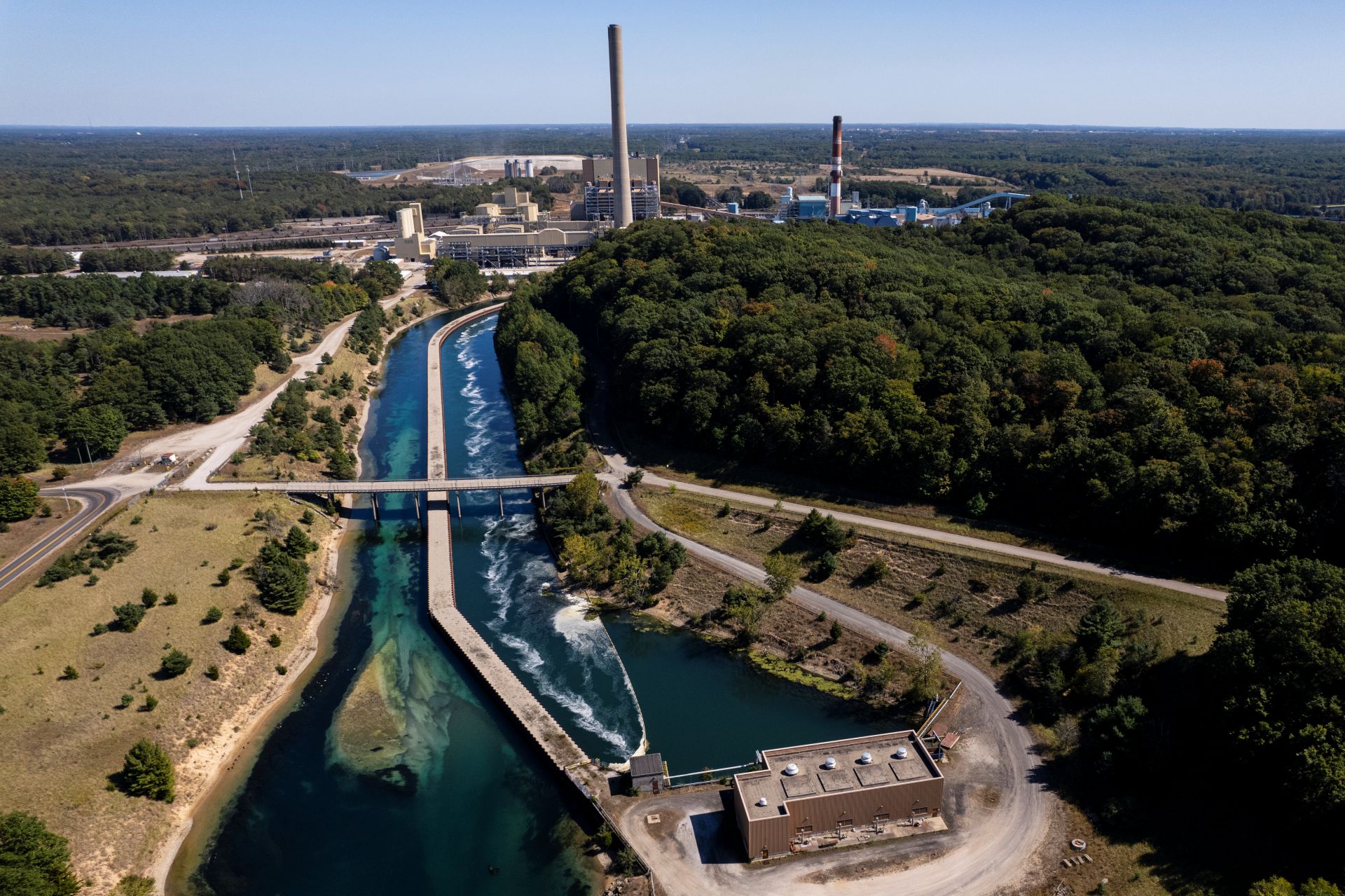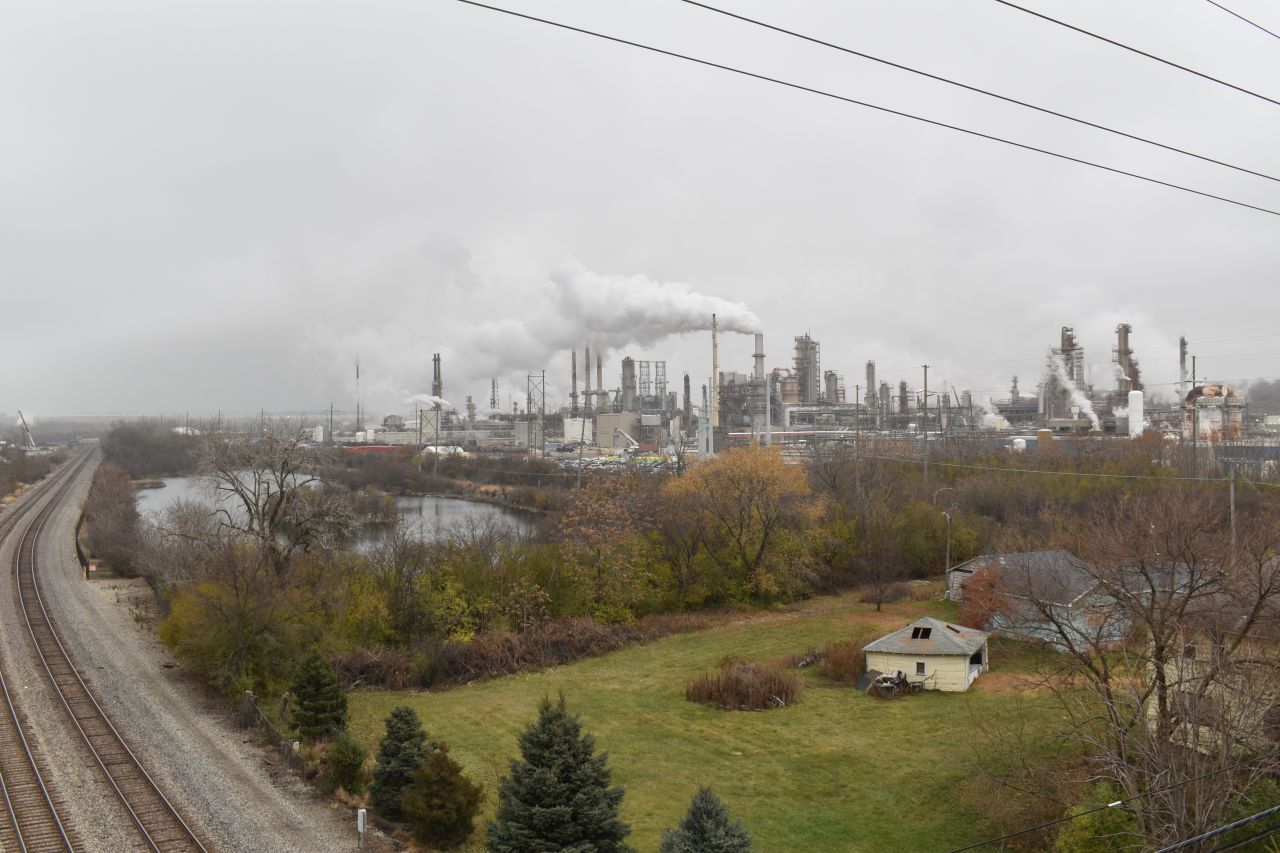Trump forces expensive fossil fuel plants to keep running, making consumers pay more

Under President Donald Trump, the Department of Energy is requiring old fossil fuel power plants set for retirement to keep running under claims of an energy “emergency,” in some cases ignoring air pollution limits and cheaper solar and wind power.
So far this year, the administration has ordered a coal-fired power plant in Michigan to delay retirement, as well as a plant that burns natural gas and oil in Pennsylvania, and a mainly oil-fired power plant in Maryland. Among the justifications some of the orders cited was Trump’s Jan. 20 declaration of an alleged energy “emergency” in the U.S. – despite federal data showing record-breaking energy production in recent years.
For the Michigan and Pennsylvania plants, the administration broke with precedent by acting without any request by electric grid operators to keep the plants running or any warnings that the closures would cause reliability problems, according to a recent Congressional Research Service report.
Environmental groups have argued the administration has no excuse to prop up aging fossil fuel power plants that cannot compete economically.
“This is a manufactured emergency on behalf of the fossil fuel industry to circumvent the market forces prioritizing cleaner, less costly renewable sources of power,” said Jessica O’Neill, managing attorney for litigation at PennFuture, part of a coalition of groups suing over the Pennsylvania plant order.
The administration’s orders to continue running the J.H. Campbell coal plant in West Olive, Michigan, has cost Midwestern ratepayers $80 million since May, operator Consumers Energy said in regulatory filings. Keeping the plant running costs $615,385 per day, CEO Garrick Rochow told investors in a recent call.
Consumers Energy had in 2021 proposed retiring the 63-year-old plant by 2025 as part of its plan to accelerate the shift away from coal. The company aimed to “be one of the first utilities in the country to end coal use,” Rochow said at the time.
The plant on the shores of Lake Michigan, which began operations in 1962, has three units that combined released more than 8.9 million tons of carbon dioxide in 2024, the same as nearly 1.9 million gasoline-powered cars and trucks driven for a year, according to EPA data. It also produced more than 5,400 tons of sulfur dioxide, which irritates the lungs, causes asthma attacks, and contributes to acid rain, and more than 3,200 tons of smog-forming nitrogen oxides.
Despite orders to delay retirement, EPA data show that units at the Campbell plant were frequently idle during the summer. Unit 1 did not produce power on 25 of the 92 days from July through September, equating to 27% of those days. Unit 2 did not produce power on 74 of those days (80%), and Unit 3 was not active on 29 of those 92 days (32%).
“Forcing this unnecessary coal plant to keep operating is bilking consumers for the benefit of the coal industry,” said Michael Lenoff, senior attorney with Earthjustice, part of a coalition of environmental and public advocacy groups challenging the orders in court.
In Pennsylvania, the Trump Administration has also twice ordered units 3 and 4 at Constellation Energy’s Eddystone Generating Station southwest of Philadelphia to keep producing power. Eddystone lies on the bank of the Delaware River near Chester, a majority Black city with a long history of industrial pollution and fights for environmental justice.
The units can burn either oil or natural gas and date to 1967 and 1970. Constellation announced in 2023 that it would retire them around May 31, 2025 “because continued operation of these units is expected to become uneconomic.”
Unit 3 operated only 586 hours – the equivalent of 24 days – in 2024. Unit 4 ran even less – 490 hours, or 20 days. Combined, they produced 58,565 tons of carbon dioxide emissions, comparable to nearly 12,400 gasoline-powered cars or trucks driven for a year.
To keep the plants running, the administration has used an authority called 202(c), a section of the Federal Power Act that allows the Department of Energy to intervene in running the nation’s electricity system during emergencies. Administrations have invoked it in response to 20 events between 2000 and June 2025, with 11 of those events being weather-related, such as hurricanes and winter storms, according to the Congressional Research Service.
One key difference under the Trump Administration: the use of this emergency power with no apparent coordination with regional electric grid operators, at least for the plants in Michigan and Pennsylvania.
“Unlike in the cases of other emergency orders issued since 2000, the relevant grid operators in these cases appear to have not requested [Department of Energy] action,” the Congressional Research Service report states. “Moreover, neither had identified reliability risks specifically associated with the retirement of the power plants in question at the time they approved those retirements.”
Only after the Department of Energy issued its initial May 30 order to keep the Eddystone plant running did grid operator PJM Interconnection voice its support. On May 31, PJM issued a statement referring to “concerns over the growing risk of a supply and demand imbalance driven by the confluence of generator retirements and demand growth.”
In a June 27 request to the Energy Department, environmental groups argued that section 202(c) powers “are reserved for sudden, imminent and unexpected energy shortages,” not theoretical shortfalls years in the future.
The Department of Energy denied this argument by the environmental groups, which have since appealed to the D.C. Circuit Court of Appeals.
The Trump Administration invoked section 202(c) again on July 28 and Oct. 24, when it ordered a unit at the Herbert A. Wagner Generating Station on the Chesapeake Bay south of Baltimore to delay its retirement and instead granted it permission to operate even more hours.
In this case, the grid operator, PJM Interconnection, had notified plant operator Talen Energy in a January 2024 letter that closing two units at the Wagner plant would “adversely affect the reliability” of the grid until transmission upgrades are finished in 2028. Talen Energy now says it will operate the units until 2029.
The plant’s owner, Talen Energy, had in 2023 proposed retiring the more than half-century-old plant because of its difficulty staying profitable while complying with environmental rules. Under the terms of a 2020 consent order, one oil-fired unit can only run 438 hours, or 18.25 days, per year. The agreement came after the EPA revealed that the plant is a significant source of sulfur dioxide pollution.
The unit produced 59,266 tons of carbon dioxide last year, roughly equal to 12,541 cars and trucks driven for a year. It also produced 69 tons of nitrogen oxides and 84 tons of sulfur dioxide, according to EPA data.
Mike Tidwell, director of the Chesapeake Climate Action Network, said using clean energy plus batteries would have been a better way to lower energy costs and protect public health.
"The Trump Administration's decision to keep the filthy oil-burning Wagner power plant open in South Baltimore is yet another disgrace in the White House's agenda to reward oil barons over vulnerable communities,” Tidwell said.
Lead photo: An aerial image of Consumer Energy's J.H. Campbell Generating Complex in Ottawa County, Michigan (Joel Bissell/Kalamazoo Gazette via AP).















